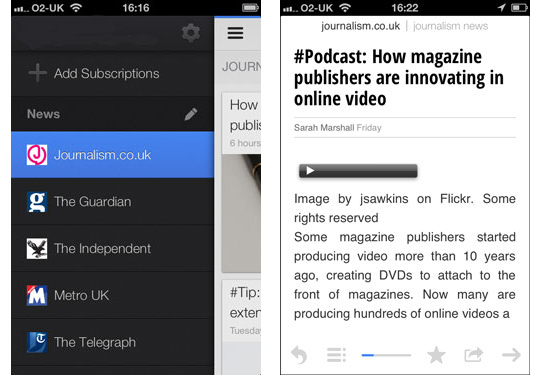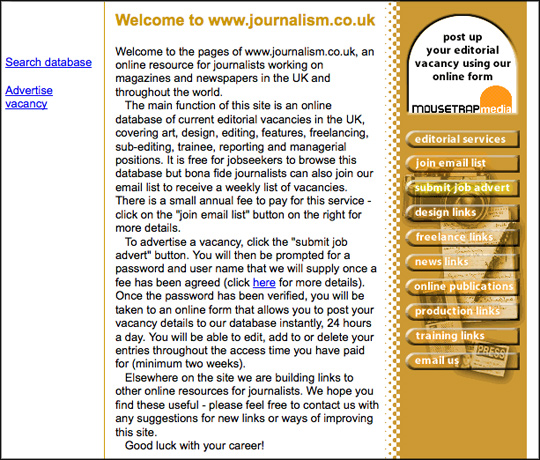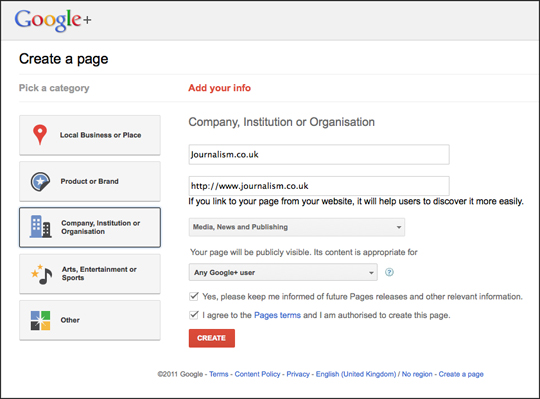What has the web ever done for journalism, except skewer its business model and return freelance rates to levels not seen since the early 90s?
Well, not much, apart from reinvent the form.
Amidst the doom of gloom in our industry it is easy to lose sight of how the web has transformed the way we tell stories, provide context and analysis, and cover live events.
This is arguably the most creative period in news journalism since movable type – new forms, new applications and new execution. Newspapers are embracing video and audio, radio stations do pictures, and TV has gone blogging.
You’re likely to have your own suggestions, and favourites. But here are five of the best:
1. Interactive infographics
Broadcast news was quick to adopt the graphic as a means of explaining complex issues or, more prosaically, make the most of a picture-challenged story. The web has taken the best examples from newspapers, magazines and TV and given them a twist – interactivity. Now you can interrogate the data, slice and dice it at will. Two of the best practitioners of the art can be found in the US – the New York Times and South Florida’s Sun Sentinel.
2. Crowdsourcing
From crime mapping to a pictorial memorial to the victims of post-election Iran to joint investigations, the crowd is proving a potent force in journalism. It took the web to provide the environment for a real-time collaboration and ad hoc groups are brought together by dint of interest, expertise, geography or some combination of all three. Not all crowdsourcing projects run smooth but the power of the crowd will continue to surprise.
3. The podcast
Just as cheap video cameras and YouTube democratised the moving image, so the podcast has made audio publishers of us all. Some podcasts mirror radio almost exactly in format, down to the commercial breaks at the top, middle and end of the show. Others break the rules. As Erik Qualman notes in his new book Socialnomics, today’s podcasters are taking liberties with advertising models (building in sponsorship) and with length of transmission (“If a podcast only has 16 minutes of news-worthy items, then why waste … time trying to fill the slot with sub-par content?”).
4. Over-by-over
A completely original approach to sports reporting, only possible on a real-time platform. Like Sky’s Soccer Saturday – where a bunch of ex-pros watch matches you can’t see and offer semi-coherent banter – over-by-over and ball-by-ball cricket and football commentaries shouldn’t work, but they do. And it’s not just the application, it’s the execution. The commentaries are knowing, not fawning, conversational and participatory. Over-by-over is CoveritLive and Twitter‘s (child-like) elder sibling.
5. The blog
The blog and the conventional news article are entirely separate forms, as any publisher who has tried to fob the user off by sticking the word ‘blog’ at the top of a standard story template will tell you. The blog allows you to tell stories in a different way, deconstructing the inverted pyramid and addressing the who, what, why, when, where and how as appropriate. Breaking news has become a narrative – early lines followed by more detail, reaction, photos, analysis, video, comment and fact checking in no defined order. It’s a collaborative work in progress. News is becoming atomised on the web and the blog is the platform on which it is happening.
I’ve named five but there are bound to be others. What have I missed?
Jon Bernstein is former multimedia editor of Channel 4 News. This is part of a series of regular columns for Journalism.co.uk. You can read his personal blog at jonbernstein.wordpress.com.






